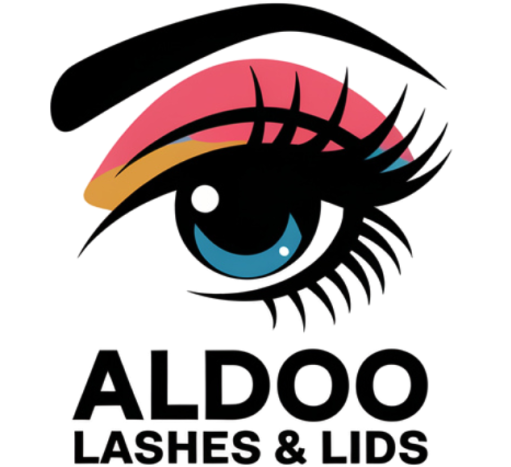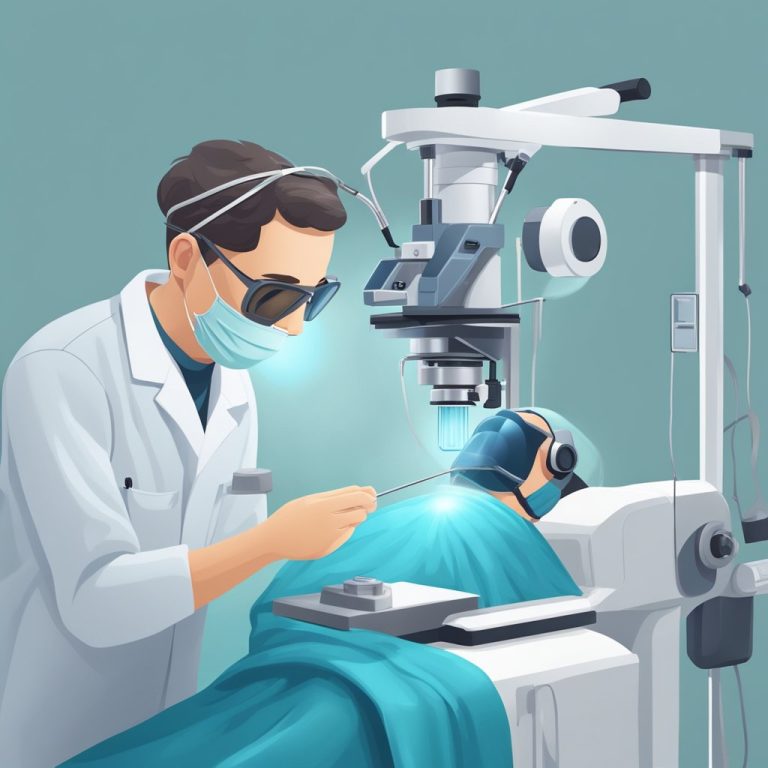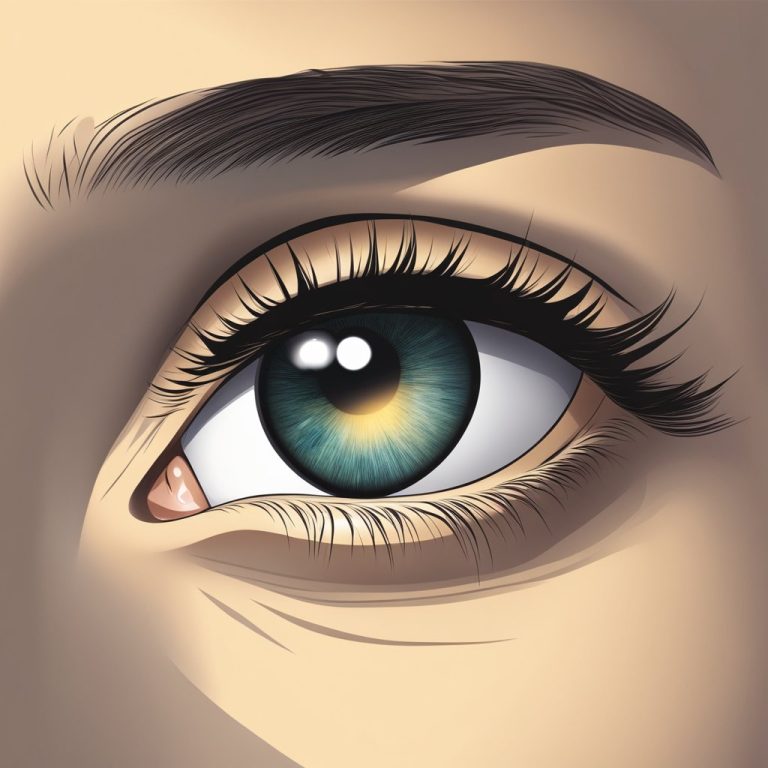Are LED Lights Bad for Your Eyes?
Are LED Lights Bad for Your Eyes? The Truth About Eye Health and LED Lighting

Understanding LED Lights
Definition and Technology
LED stands for Light Emitting Diode, which is a semiconductor device that emits light when an electric current flows through it.
LED lights are becoming increasingly popular because they are energy efficient, long-lasting, and produce very little heat. They are commonly used in electronic devices, traffic lights, and indoor lighting.
LED technology has improved significantly over the years. The development of a blue LED in 2014 was a significant achievement that led to LED lighting becoming widely popular.
Blue LED light is an important component of white LED light, which is commonly used in indoor lighting. LED bulbs are cool to the touch and produce bright light using a fraction of the energy of incandescent or fluorescent bulbs.
Spectrum of LED Light
LED lights emit a spectrum of light that includes blue light, which has a shorter wavelength and higher energy than other colors in the spectrum.
There have been concerns that blue light emitted by LED lights can damage your eyes, but research suggests that this is not a significant risk for most people.
However, prolonged exposure to blue light can disrupt your sleep patterns and cause eye strain.
According to a report by the French Agency for Food, Environmental and Occupational Health and Safety (ANSES), blue light exposure can increase the risk of age-related macular degeneration. However, this risk is primarily associated with exposure to blue light from the sun, not from LED lights.
LED lights are generally safe for your eyes, but it is important to use them responsibly.
You can reduce your exposure to blue light by using warm white LED lights, which emit less blue light than cool white LED lights. You can also use blue light filters on your electronic devices to reduce your exposure to blue light.
Potential Eye Risks of LED Lights
LED lights have become increasingly popular in recent years due to their energy efficiency and long lifespan. However, there are potential eye risks associated with prolonged exposure to LED lights. In this section, we will discuss some of the most common eye risks associated with LED lights.
Blue Light Hazard
One of the most significant risks associated with LED lights is blue light hazard. Blue light is a high-energy visible (HEV) light that can penetrate deep into the eye and cause damage to the retina over time.
According to a Cleveland Clinic article, “LEDs produce short-wave, high-energy blue light, which has been linked to biological and sleep disturbances. It is also associated with blue light hazard — when an intense light source causes damage to the retina.”
Phototoxicity
Another risk associated with LED lights is phototoxicity. Phototoxicity occurs when the cells in the eye are exposed to too much light, causing damage to the retina.
According to an article on All About Vision, “The longer the eyes are exposed to blue light, the greater the risk of developing macular degeneration and other eye conditions.”
Flicker and Glare
Flicker and glare are also common risks associated with LED lights. Flicker occurs when the light source rapidly switches on and off, causing the eyes to strain and leading to headaches and eye fatigue. Glare occurs when the light source is too bright, causing discomfort and reducing visual clarity.
According to an article on Space Coast Ophthalmology, “Overexposure to blue light from LEDs and other artificial sources has been linked to digital eye strain and potential retinal damage.”
To mitigate the risks associated with LED lights, it is recommended that you limit your exposure to these lights, especially at night. You can also invest in blue light blocking glasses or filters to reduce the amount of blue light that enters your eyes. Additionally, you can adjust the brightness and color temperature of your LED lights to reduce glare and flicker.
Comparative Analysis
LED vs. Incandescent Bulbs
LED lights are becoming increasingly popular due to their energy efficiency and long lifespan. However, many people are concerned about their potential negative effects on eye health.
When compared to incandescent bulbs, LED lights emit less heat and UV radiation, making them a safer option for your eyes. Incandescent bulbs emit more heat and UV radiation, which can cause eye strain, dryness, and fatigue.
LED lights are also more energy-efficient than incandescent bulbs. According to a study by the Department of Energy, LED lights use up to 75% less energy than incandescent bulbs, resulting in lower energy bills and a smaller carbon footprint. They also last longer, with an average lifespan of 25,000 hours compared to 1,000 hours for incandescent bulbs.
LED vs. Fluorescent Lights
Fluorescent lights are another popular lighting option, commonly used in offices and commercial buildings. While they are more energy-efficient than incandescent bulbs, they can still cause eye strain and fatigue.
Fluorescent lights emit UV radiation and blue light, which can damage the retina and cause eye strain.
LED lights, on the other hand, emit less UV radiation and blue light, making them a safer option for your eyes. They are also more energy-efficient than fluorescent lights, using up to 50% less energy and lasting up to 10 times longer.
Safety Guidelines and Usage Tips
Proper Installation and Usage
When using LED lights, it is important to follow proper installation and usage guidelines to minimize the risk of eye damage. Here are some tips to keep in mind:
- Position your LED lights in a way that avoids direct exposure to your eyes. Avoid using LED lights directly in your line of sight.
- Use LED lights with lower blue light emission. Not all LEDs emit the same amount of blue light. Look for LED lights labeled as “warm” or “soft”, which typically have less blue light.
- Manage your lighting. Switch to warmer, yellow lights wherever possible to reduce exposure to blue light.
Choosing the Right LED Products
When shopping for LED products, keep the following in mind:
- Choose high-quality LED products from reputable manufacturers. Look for products that meet safety standards and have been tested for eye safety.
- Check the color temperature of LED lights. A bluish-white light resembling daylight will have a color temperature of about 6,000K. A cool white light will have a color temperature of about 4,000K. A warm white LED light (which produces a reddish tone) will have a color temperature of about 3,000K.
- Consider using LED products with built-in dimming features. This can help reduce the amount of blue light emitted by the product.
Ongoing Research and Studies
While some studies suggest that LED lights can cause damage to your eyes, the research is still ongoing. Researchers are trying to determine the exact effects of LED lights on our eyes.
One study published in the journal Nature found that LED lights can cause damage to the retina. However, this study involved extreme light exposure to high-brightness lighting systems, which are not commonly found in households.
Another study conducted by the European Commission found that LED lights could only potentially damage the eyes and skin under certain circumstances, such as exposure to high-intensity lighting.
Other studies have suggested that LED lights may not be harmful to our eyes at all. For example, a study published in the journal All About Vision found that LED lights produce a narrow band of visible light when an electric current passes through them, making them safer for our eyes than other types of lighting.
Frequently Asked Questions
What are the potential harmful effects of LED lights on vision?
LED lights emit blue light, which can cause harm to the eyes if exposed to it for long periods. Blue light can penetrate the retina and damage cells, which can lead to vision problems such as macular degeneration. Additionally, flickering and glare from LED lights can cause eye strain, headaches, and fatigue.
How can one protect their eyes from LED light exposure?
There are several ways to protect your eyes from LED light exposure. One way is to use blue light filters on electronic devices such as phones, tablets, and computers. Another way is to use LED lights that emit warm white light instead of cool white light. Additionally, taking frequent breaks from electronic devices can help reduce eye strain.
Is there a difference in eye safety between warm white and other LED lights?
Warm white LED lights emit a softer, less intense light than cool white LED lights. This makes them less harmful to the eyes, as they produce less blue light. However, it is still important to limit exposure to any type of LED light, especially at night.
How do LED lights compare to fluorescent lights in terms of eye health?
LED lights are generally considered to be safer for the eyes than fluorescent lights. This is because LED lights do not emit UV radiation, which can cause damage to the eyes and skin. Additionally, LED lights do not contain mercury, which is a toxic substance found in fluorescent lights.
Which types of lighting are considered best for maintaining healthy eyes?
The best types of lighting for maintaining healthy eyes are those that emit warm white light and have a high color rendering index (CRI). Warm white light is less harmful to the eyes than cool white light, and a high CRI ensures that colors appear more natural and vibrant.
Can LED strip lights harm your eyes?
Yes, LED strip lights can harm your eyes if used improperly. To prevent this, limit your exposure to LED strip lights. This is especially important at night, as they can disrupt circadian rhythms and interfere with sleep. Additionally, using warm white LED strip lights can help reduce the harmful effects of blue light on the eyes.






